What Large Dog Breeds Are Surprisingly Good With Cats?
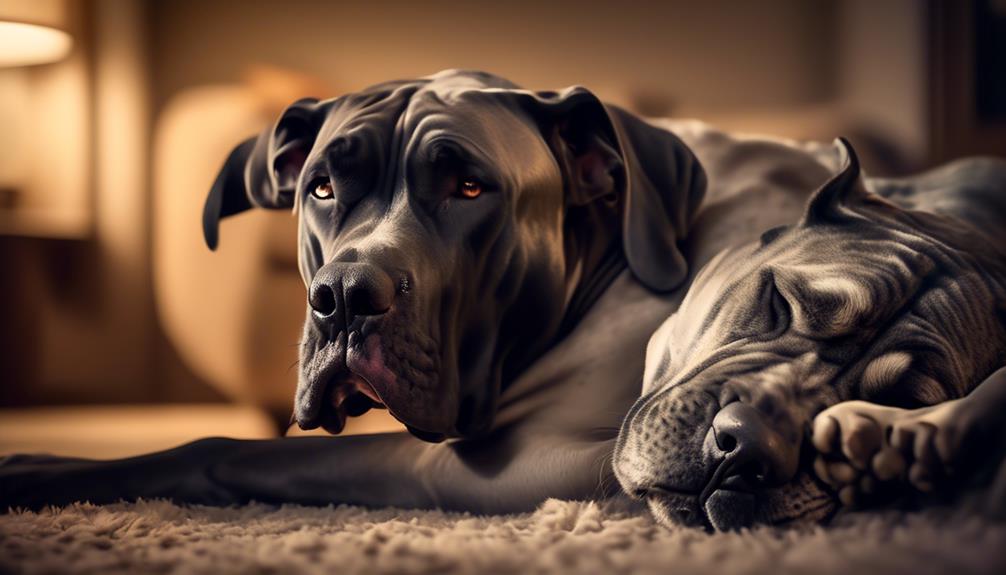
Large dog breeds that are surprisingly good with cats include the Labrador Retriever, Golden Retriever, and Newfoundland.
These breeds have a natural calmness and patience that allows them to coexist harmoniously with cats.
Key Takeaways
- Labrador Retrievers, Golden Retrievers, Newfoundlands, German Shepherds, and Collies are large dog breeds that can get along with cats.
- Successful coexistence between dogs and cats requires early socialization and training, slow and careful introductions, monitoring interactions, trust-building, and positive reinforcement.
- Techniques for introducing dogs and cats include early socialization, separation but within smelling distance, providing a safe space for the cat, allowing casual supervised interactions, and implementing supervision and safety measures.
- Early socialization is crucial for peaceful coexistence, and it involves introducing the dog and cat at a young age, gradually increasing interactions, ensuring positive experiences, and using treats and positive reinforcement. Supervision and safety measures, such as never leaving the pets alone unsupervised, establishing a positive relationship before unsupervised interactions, preventing conflicts or accidents, and creating a safe environment, are also important.
Great Pyrenees
Great Pyrenees, with their calming personality and impressive size, are known for being good with cats. As one of the large dog breeds in the herding group, Great Pyrenees have a wide range of skills and traits that make them suitable companions for cats. Despite their natural prey drive, these dogs can learn to live peacefully with feline friends through proper training and socialization.
Great Pyrenees are often described as family dogs due to their patient and loyal nature. They have a natural instinct to protect and guard, which can be beneficial when it comes to keeping cats safe. Their calm and tolerant demeanor allows them to coexist peacefully with cats, making them an ideal choice for households with both dogs and cats.
To ensure a harmonious relationship between Great Pyrenees and cats, early socialization and training are crucial. Introducing them to cats at a young age helps establish positive associations and prevents any potential conflicts. Separate feeding places are also recommended to avoid any food-related tensions.
Golden Retriever
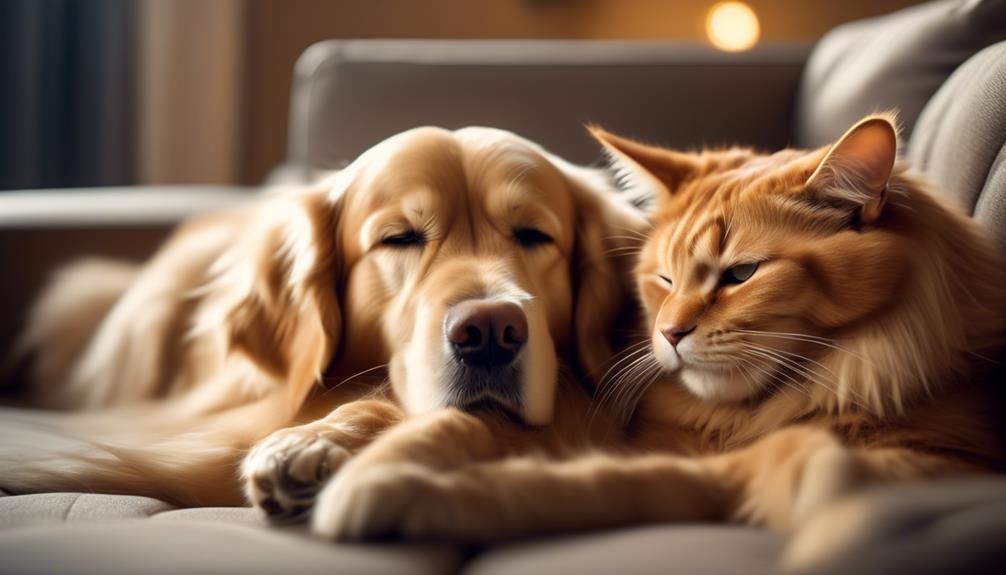
With their kind and empathetic nature, Golden Retrievers are often excellent companions for cats. These lovable dogs are one of the largest dog breeds and are known for their gentle and friendly demeanor. When properly trained and introduced, Golden Retrievers can get along well with cats and even become close pals.
To better understand the compatibility between Golden Retrievers and cats, let's take a look at the following table:
| Traits | Golden Retrievers |
|---|---|
| Size | Large |
| Temperament | Gentle, friendly, and outgoing |
| Training | Respond well to training and eager to please |
| Compatibility with Cats | Can get along with cats, but require proper training to avoid chasing |
| Introduction | Slow and careful introductions are recommended |
| Interaction | Can become pals with cats and even cuddle |
Golden Retrievers have a natural instinct to retrieve, which can sometimes make them want to chase smaller animals, including cats. However, with proper training and socialization from a young age, they can learn to view cats as part of the family rather than prey. Their intelligence and eagerness to please make them good candidates for positive reinforcement training.
Newfoundland
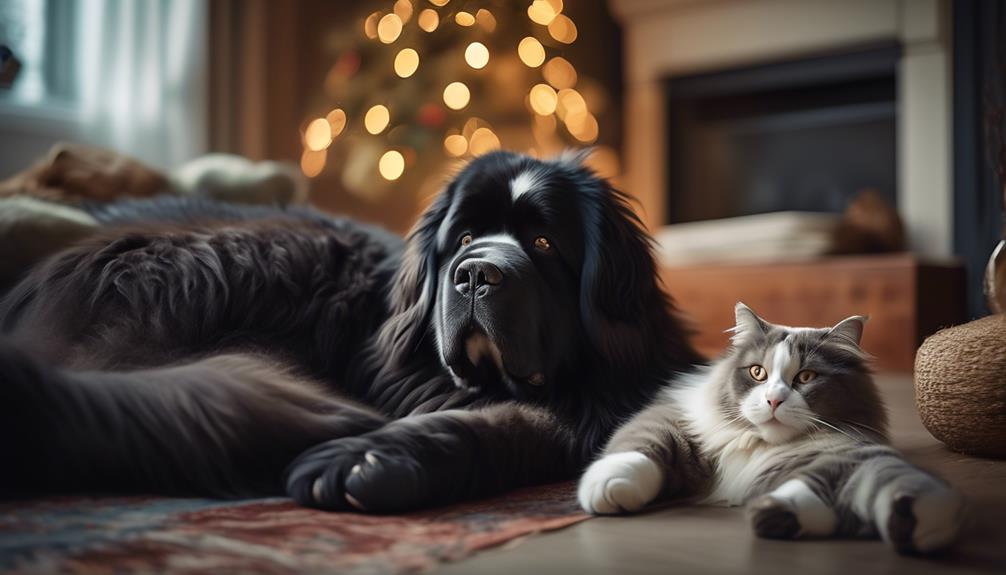
Newfoundlands, known for their calming personality and gentle nature, are a large dog breed that can get along well with cats. Despite their massive size, Newfoundlands have a surprisingly gentle demeanor, making them an ideal companion for cats. These dogs aren't only gentle with cats, but also with children, other dogs, and even strangers.
Bred for various farm jobs, Newfoundlands have a history of herding and pulling milk carts. However, their gentle and patient nature extends beyond their working abilities. They're instinctually aware of their size and are gentle around tiny humans and animals.
When introducing a Newfoundland to a cat, it's important to start the process at a young age. Early socialization and training are crucial in helping them develop positive relationships with other animals. While Newfoundlands generally have a good temperament, each dog has an individual personality, so it's essential to monitor their interactions with cats and ensure they're supervised.
Compared to other large dog breeds, such as the Cavalier King Charles or the German Shepherd, Newfoundlands are known for being calm and easygoing. This calm nature contributes to their ability to get along well with cats and create a peaceful environment in the home. So, if you have an adult cat and are looking for a large, calm dog breed, consider the gentle and friendly Newfoundland.
German Shepherd
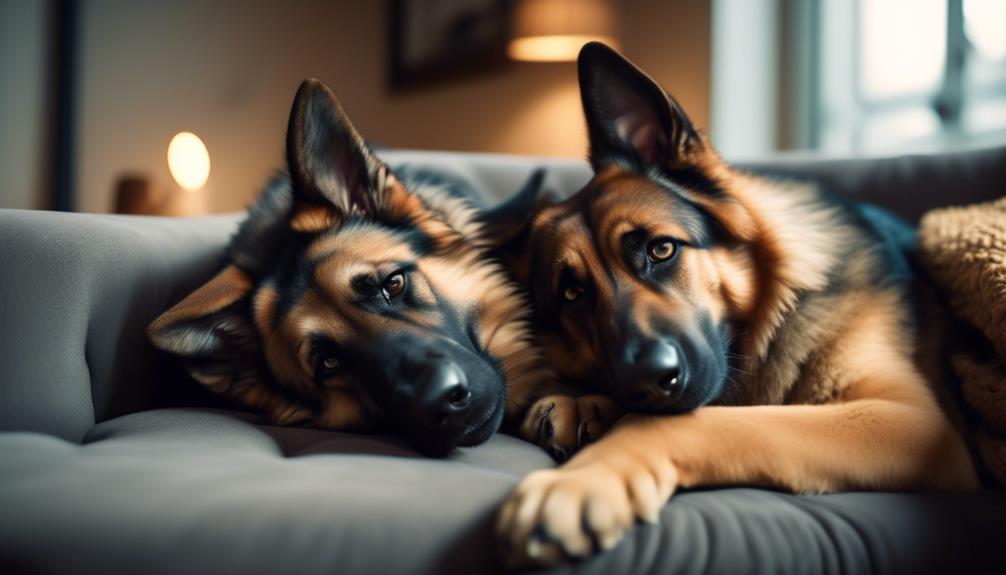
German Shepherds can develop positive relationships with cats through proper training and socialization. Despite their size and reputation as working dogs, German Shepherds can coexist peacefully with feline companions. These gentle giants can adapt to living with cats, even though they have a herding instinct. Trust-building is crucial, and early socialization and training are necessary before leaving German Shepherds alone with cats.
German Shepherds are intelligent breeds that can be trained to herd various animals, including cats. With proper socialization and trust-building at a young age, German Shepherds can learn to live safely with cats. These dogs are known for their loyalty and protective nature, making them excellent family companions. German Shepherds love attention and thrive in environments where their needs are met.
To ensure a harmonious relationship between a German Shepherd and a cat, it's important to prioritize the needs of both animals. Supervision and gradual introductions are key, allowing the cat and dog to become familiar with each other's scent and presence. With patience, consistency, and positive reinforcement training, German Shepherds can become safe and loving companions for cats.
Collie
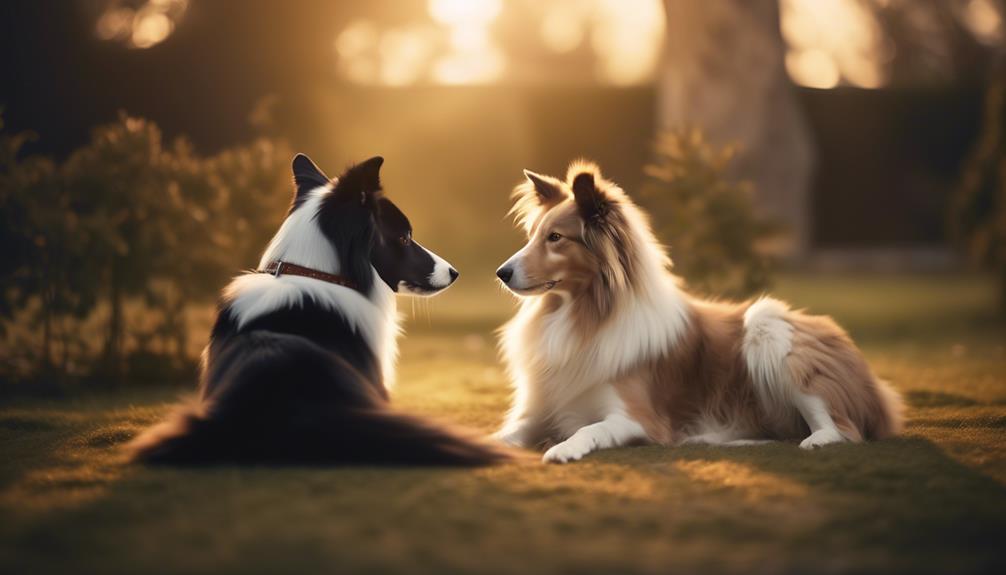
Collies, known for their intelligence and sweet nature, can peacefully coexist with cats when properly trained and socialized. Here are some reasons why Collies make good companions for cats:
- Early socializing and trust-building: Collies require early socialization, especially when introducing them to cats. By exposing them to different experiences and teaching them how to interact with cats from a young age, they can learn to coexist peacefully.
- Tolerance of other pets: Collies are often tolerant of other family pets and can extend their love to cats with proper introductions. Their calm and gentle demeanor makes them a good fit for households with cats.
Labrador Retriever
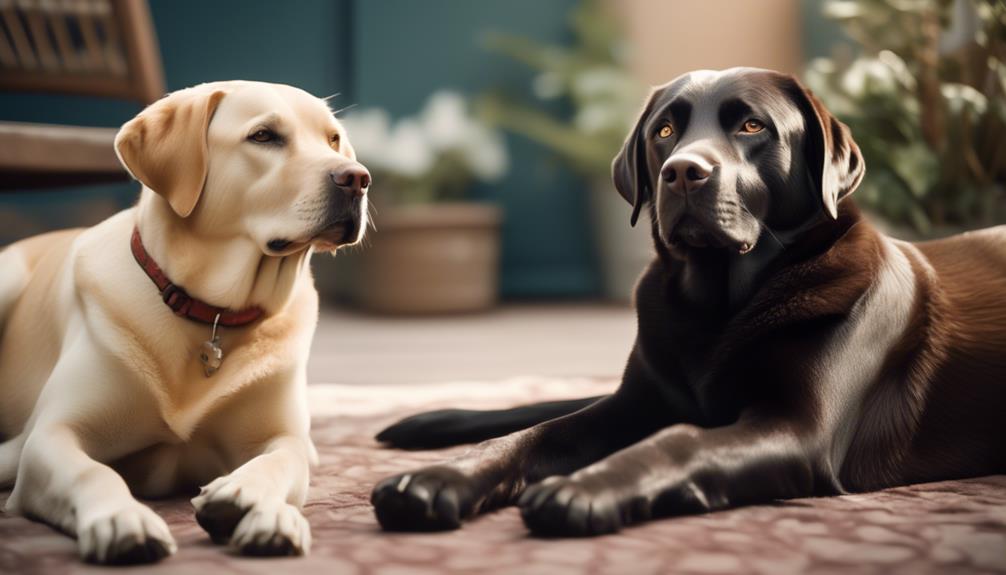
Labrador Retrievers, known for their kind and empathetic nature, have the potential to form positive relationships with cats when introduced properly and given the necessary training. These dogs are friendly and eager to please, making them likely to get along with cats and even make friends with them. However, Labrador Retrievers have a natural prey drive, so it is important to make sure they are properly trained to not chase cats.
To facilitate a harmonious relationship between a Labrador Retriever and a cat, a slow introduction is crucial. This allows both pets to become familiar with each other's scents and presence without feeling threatened. Additionally, early socialization and training are important to teach the Labrador Retriever to interact calmly and respectfully with the cat.
Labrador Retrievers can adapt well to living with cats and may even enjoy cuddling with them. Their friendly and outgoing nature makes them great candidates for forming positive relationships with cats. However, it is essential to provide proper training and supervision to ensure their interactions remain safe and peaceful.
Here is a table summarizing the key points about Labrador Retrievers and their compatibility with cats:
| Labrador Retriever | Cats |
|---|---|
| Kind and empathetic nature | Cats can feel safe and comfortable |
| Requires training to not chase cats | Slow introduction is important |
| Can adapt well to living with cats | Early socialization and training are necessary |
| Friendly and outgoing | Potential for positive relationships |
| May enjoy cuddling with cats | Proper supervision is crucial |
Shetland Sheepdogs
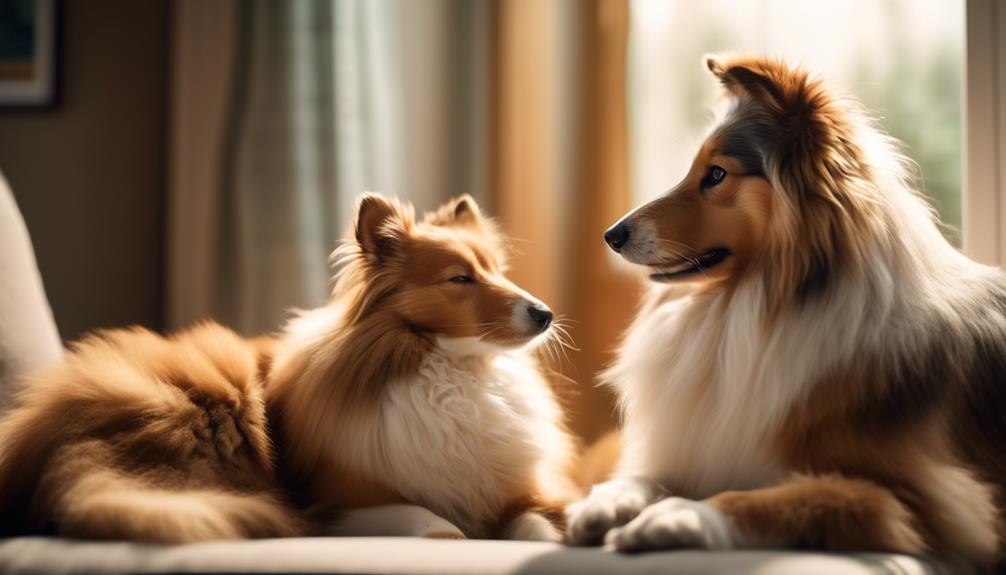
Shetland Sheepdogs, known for their intelligence and adaptability, can develop positive relationships with cats through proper training and socialization. Here are some key points to consider when introducing a Shetland Sheepdog to a cat:
- Herding Instinct: Shetland Sheepdogs have a natural herding instinct, so it's important to monitor their behavior around cats. While they're unlikely to herd cats as long as they receive enough exercise and mental stimulation, it's essential to observe their interactions closely.
- Early Socialization: Early socialization is crucial for Shetland Sheepdogs to peacefully coexist with cats. Introduce them to cats at a young age and gradually increase their interactions, ensuring positive experiences for both the dog and cat.
When introducing a Shetland Sheepdog to a cat, follow these steps:
- Separate but within Smelling Distance: Initially, keep the dog and cat in separate spaces where they can smell each other without direct contact.
- Give the Cat Space: Allow the cat to have a safe area where it can retreat if needed. This will help build trust and reduce stress.
- Casual Interactions: Once the dog and cat are comfortable with each other's presence, allow them to have supervised, casual interactions. Gradually increase the duration and intensity of these interactions over time.
Remember to use treats and positive reinforcement to facilitate the introduction process. Never leave the dog and cat alone unsupervised until you're sure they've developed a positive relationship.
Frequently Asked Questions
What Big Dog Gets Along With Cats?
Big dogs and cats can get along surprisingly well with proper introduction and training. Tips and tricks for a smooth transition include understanding body language, proper socialization, and choosing the right breed for a multi-pet household.
What Dog Breed Do Cats Like the Most?
Cats are individuals and have varying preferences, so it's hard to say which dog breed they like the most. However, certain popular large dog breeds, such as Golden Retrievers and Labrador Retrievers, are known to get along well with cats.
Can Big Dogs Live With Cats?
Big dogs can live with cats if introduced properly. Training, socialization, and creating a harmonious environment are key. Understanding body language and managing playtime/exercise needs are important. Benefits include companionship and building trust.
What Is the Most Dog Friendly Cat Breed?
Dog friendly cat breeds are a great addition to any household. They bring joy, companionship, and a sense of harmony. With proper training and introductions, these breeds can coexist peacefully and create a loving environment for all.









